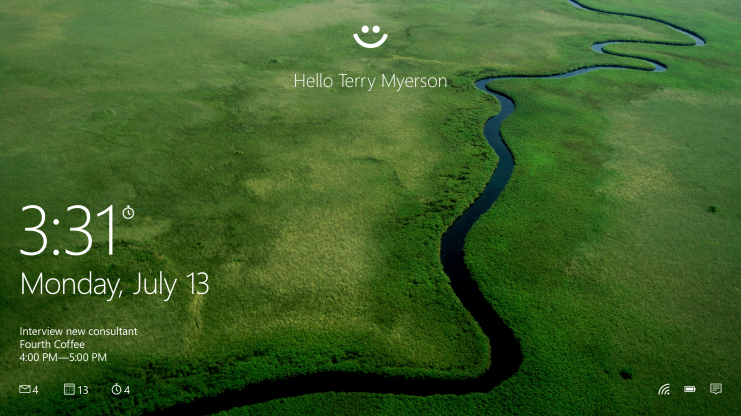
The official Windows 10 launch is a long way off but Microsoft took to its official Windows blog today to talk a bit more about the security features users can expect once the OS rolls out to users.
One of these features is called ‘Windows Hello’ and leverages biometric sign-in. Microsoft said today that users will be able to sign into their device with either their fingerprint, their face, or even their iris. This new biometric authentication will allow you to unlock devices and authenticate applications, enterprise content, and other online experiences.
The company says if your device already has a fingerprint scanner (as many laptops do), you’ll be able to use Windows Hello when Windows 10 comes out (though it’s opt-in, so if you’d prefer to stick with the traditional password, you can). The facial and iris recognition is powered by a combination of hardware and software and so will require special hardware outside of just your regular webcam. The upside is that Microsoft’s solution won’t be easily tricked by a photo of you or a lookalike and will work in a variety of different lightings.
Of course, biometric authentication alone can’t kill the password or eliminate the need for one. Even if an app or service allows for biometric sign-in, you’ll still need your password to set up said biometric authentication. Microsoft is hoping to remove the need for your password in even these instances, though. Windows Hello is paired with Microsoft Passport, a technology that allows services to support Microsoft Hello without the need for a password.
“Instead of using a shared or shareable secret like a password, Windows 10 helps to securely authenticate to applications, websites and networks on your behalf—without sending up a password,” Microsoft explains. “Thus, there is no shared password stored on their servers for a hacker to potentially compromise.”
Microsoft doesn’t specifically mention if this feature will be available on both Windows 10 for desktop and tablets and Windows 10 for mobile and small tablets (two separate but similar OSes), but the company has filed the blog post under ‘PC,’ ‘Phone,’ and ‘Tablet,’ which is pretty encouraging for mobile users.
Presumably that means that as long as your device is equipped with a fingerprint reader, illuminated IR sensor or the other necessary biometric sensors, you’ll be able to sign in using Windows Hello no matter what device you’re using. Microsoft has said we can expect a flagship Lumia after the OS launches, so it’s very likely the first flagship Windows 10 phone will feature this functionality.
[source]Microsoft[/source]
MobileSyrup may earn a commission from purchases made via our links, which helps fund the journalism we provide free on our website. These links do not influence our editorial content. Support us here.


